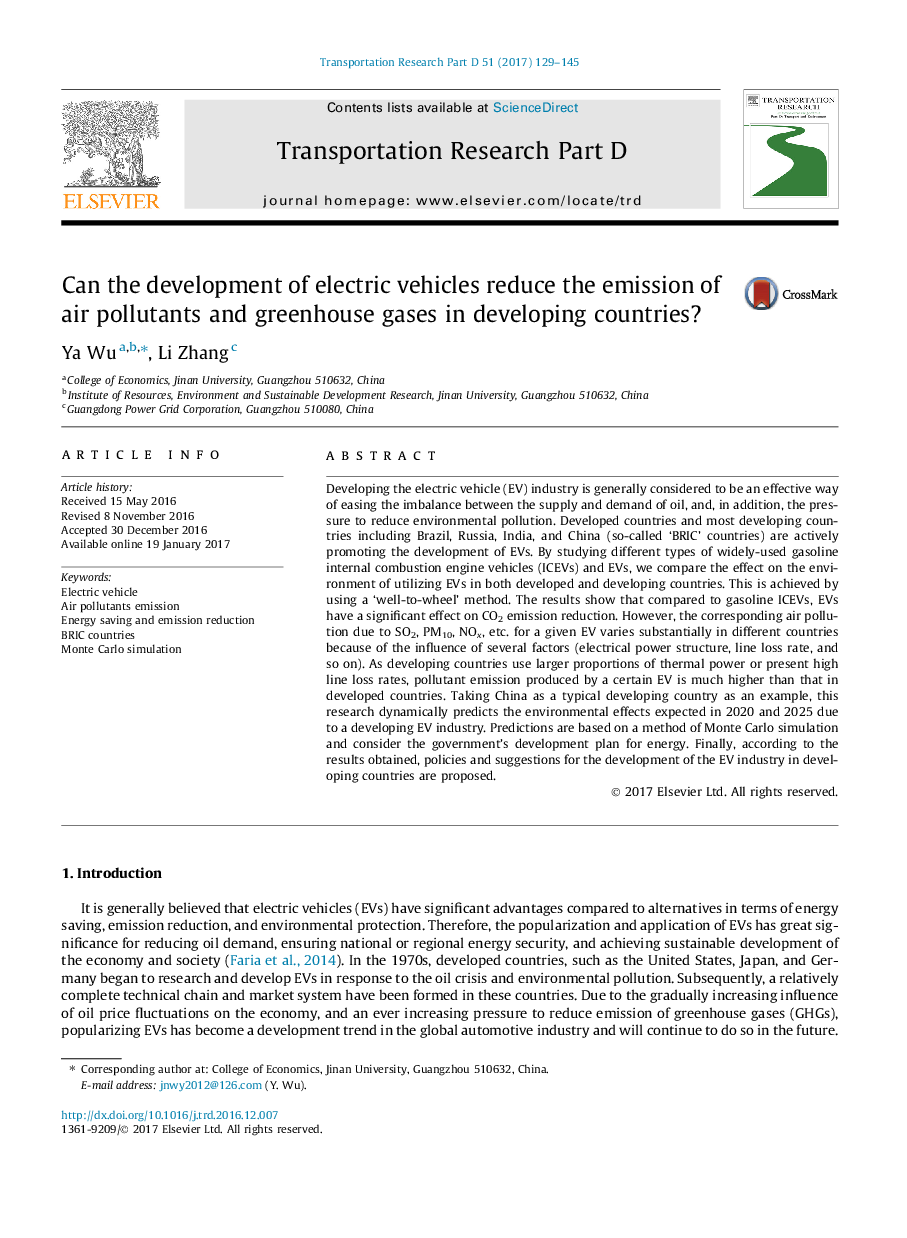| کد مقاله | کد نشریه | سال انتشار | مقاله انگلیسی | نسخه تمام متن |
|---|---|---|---|---|
| 5119393 | 1485872 | 2017 | 17 صفحه PDF | دانلود رایگان |
- The pollutant emission differences between the use of EVs and ICEVs are compared.
- The environmental impact of developing EV industry in China is predicted.
- WTW method is used to assess the environmental impact for EVs.
- Factors affecting the emission of air pollutants of EVs were studied.
- Targeted policy recommendations for EV industry are proposed.
Developing the electric vehicle (EV) industry is generally considered to be an effective way of easing the imbalance between the supply and demand of oil, and, in addition, the pressure to reduce environmental pollution. Developed countries and most developing countries including Brazil, Russia, India, and China (so-called 'BRIC' countries) are actively promoting the development of EVs. By studying different types of widely-used gasoline internal combustion engine vehicles (ICEVs) and EVs, we compare the effect on the environment of utilizing EVs in both developed and developing countries. This is achieved by using a 'well-to-wheel' method. The results show that compared to gasoline ICEVs, EVs have a significant effect on CO2 emission reduction. However, the corresponding air pollution due to SO2, PM10, NOx, etc. for a given EV varies substantially in different countries because of the influence of several factors (electrical power structure, line loss rate, and so on). As developing countries use larger proportions of thermal power or present high line loss rates, pollutant emission produced by a certain EV is much higher than that in developed countries. Taking China as a typical developing country as an example, this research dynamically predicts the environmental effects expected in 2020 and 2025 due to a developing EV industry. Predictions are based on a method of Monte Carlo simulation and consider the government's development plan for energy. Finally, according to the results obtained, policies and suggestions for the development of the EV industry in developing countries are proposed.
Journal: Transportation Research Part D: Transport and Environment - Volume 51, March 2017, Pages 129-145
